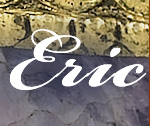 |
 |
||||||||||||||||||||
|
Extremely visible from any approach, The Hill House commands your attention from the very first.And that's how architect Charles Rennie Mackintosh intended it. Soaring from its hilltop site, the house could have easily been screened from prying eyes, but Mackintosh believed that architecture was a true art form and demanded to be seen. Every time I enter this stridently masculine building with its roughly tactile walls, asymmetrical windows, turrets and tall angular chimneystacks, I am amazed by the elaborate fairy-tale interior before me. Once beyond the fortress-like door you climb four stairs to an atmospheric wood-panelled hall. To the left is a screen of timbers framing a staircase, magically inset with jewel-like coloured glass, and everywhere are the square and rectangle motifs that feature in much of Mackintosh's work. I love this entrance, but what makes it so powerful is what lies beyond. It is a house of contrasts...Nothing can prepare you for the sense of wonder as you leave the dark, moody hall and enter a drawing room that's flooded with light and decorated in soft, feminine shades. It's as if you've walked into a silvery glade with a blooming rose garden only a few steps further. The original owner, Walter Blackie, a well-known publisher, was famous for printing fairy tales, and Mackintosh has reflected his client's interests and desires through his use of fantasy themes. Every twist and turn is more than it seems - you don't go on a tour of this house, you go on a journey. To my mind The Hill House is Mackintosh's masterpiece - a fact that was very much helped by the devotion of his clients to his ideas - designed at a time (1902-04) when his confidence and skills were perfectly matched. In this house Mackintosh was not only the architect, he was interior decorator and furniture designer. Every detail - practical and aesthetic - was seen to by him, including the window catches and the tools for the fireplace. His wife played an important role, too, and from the perspective of their artistic abilities theirs was a marriage made in heaven! Margaret Macdonald - an artist in her own right and part of The Glasgow Four - not only encouraged her husband to be more adventurous and expressive in his work, she also collaborated with him. He even said of her, "Margaret has genius, I have only talent." There's no doubt that Mackintosh's decorative scheme here owes a lot to his wife, and she was also in tune with the mistress of the house, Anna Blackie. In measurable terms, Margaret's major contribution is the gesso panel above the fireplace, which depicts a princess entangled in briars - perhaps in reference to the trapped condition of women in Edwardian society. But other touches were also commissioned from Margaret by Mrs Blackie, including antimacassars of green velvet dripping with blue beads - recreated by the National Trust for Scotland. This is a room for socialising in. It is at the heart of family life and its feminine scheme reflects that. The stencils of big pink roses in full bloom do not just symbolise romance, they also represent family love. When the Trust took over in 1982, The Hill House was sparsely furnished. Today, many of the decorative schemes have been recreated to Mackintosh's plans, and the original furniture - some of it scattered when the Blackie family gave up the house in 1953 - gradually reassembled. Of course, there were elements of Mackintosh's original designs that Blackie chose not to incorporate, mainly because of the cost, but as time went on he fell more in love with the ornamentation and some of it was later reinstated. Blackie trusted his architect entirely - which was not the case with other clients that Mackintosh collaborated with - and gave him a free reign. He even sacrificed some quality furnishings, giving preference to Mackintosh's designs. But the architect's skill is not so much seen in individual items, as in the way decorative motifs echo each other and are positioned with great spatial skill around the house. In the drawing room, the five cubical wall lights are striking - and an innovative touch given that most reception rooms had one large central light fitting. They also pick up on geometric forms elsewhere, such as the squares of pink glass in doors and walls and the motifs on soft furnishings. Bookshelves, seating and curved ledges for vases are an integral part of the design and work harmoniously with the overall scheme. Recently I've been involved in a documentary, The House that Mackintosh Built, due to be shown this autumn on Discovery Home & Leisure. It charts Mackintosh's last building project, 78 Derngate in Northampton. Meeting architects, builders and craftsmen who have helped turn the clock back and painstakingly restore the property, and doing a bit of plastering and bricklaying myself, has been a very personal journey of discovery for me. My own passion for Mackintosh began 32 years ago when I was given a copy of The Studio magazine for 1903 featuring an exhibition pavilion he had designed. I was mesmerised by his sinuous organic forms and it was he who helped me formulate what made an object Art Nouveau. Mackintosh is one of those rare individuals who deserves the accolade of a genius. Synthesising so many styles - Arts & Crafts, Japanese, Art Nouveau, Scots baronial and modern abstraction - in a single space so successfully, there is no creative imagination quite like his!'
|
